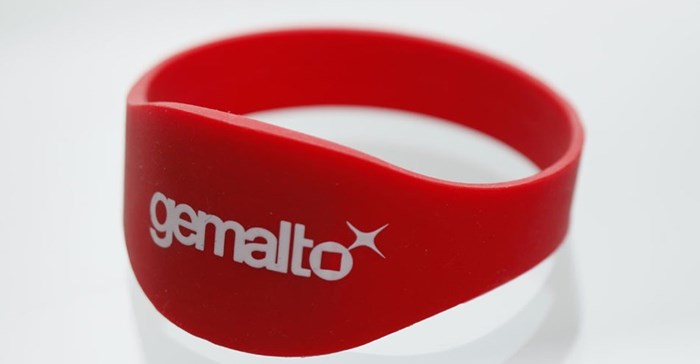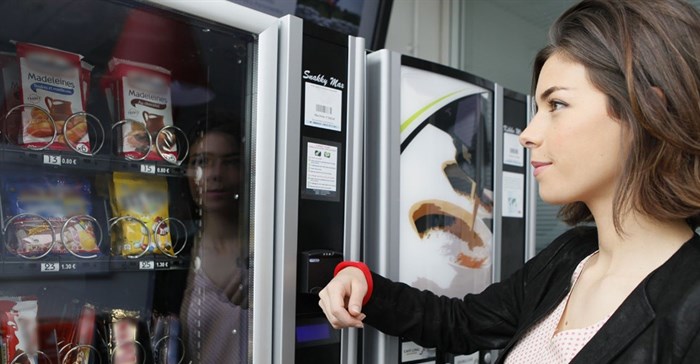First, you can hop onto and pay for any form of public transport - train, bus, or metre taxi - with a quick flash of your wearable, smart wristband and be carted off to the game, neatly bypassing the hassle of carrying cash or a conventional banking card, second, you can gain entry to the match with another flash of your wearable device - so no need to carry a ticket - and third, you can use it to buy refreshments, but because transaction times will now be halved when compared to paying via cash or your banking card, you can skip the long, winding, exhausting queues. The smart wristband can also represent the team you're supporting, as well as present sponsors with opportunities for branding and to run innovative loyalty programmes.

This scenario may not be the norm in South Africa yet, but with the growth of multiple stadiums across the nation, and its collective march towards smart city status, it may well be and soon. South Africa has a history of hosting large scale sporting events and receiving millions of visitors per annum and bearing in mind that millions of food and drinks are sold at these events, smart wristband based on contactless technology and offering payment, access and loyalty programme functionalities could find use in South Africa.
Since the 2010 FIFA World Cup, the number of visitors in South Africa has growth by 15%. In the case of high volumes such as the foregoing, proper crowd management is key to avoiding disgruntled visitors, frustrated by endless queues at events. However, can the wearable devices prove to be as big in South Africa as in other markets?

The technology is field-proven and based on industry standards and it is compatible with any contactless payment terminals displaying the contactless logo, be it within the stadium facilities or outside, at retail outlets.
Digital security firm Gemalto recently injected a rather nifty wearable into the UK's infrastructure, resulting in what is now being touted a 'cashless stadium'. The firm is supplying popular rugby union club Saracens with prepaid wristbands supporting swift and secure contactless payments for food and drinks at North London's Allianz Park stadium.
"This is the second 'cashless stadium' project we have supported in the UK this year, underlining the fact that wearable contactless solutions capable of encompassing transport, access and payment, as well as loyalty programmes are very much the future for sports and other mass participation events," said François Chaffard, director of Banking Solutions and Services for Middle East and Africa at Gemalto.
In addition to improving crowd management, 'cashless stadiums' serve up one other rather lucrative benefit: high-penetration sponsorship opportunities, tied in with the use of the wristband. For instance, Spain's CaixaBank recently introduced its 'affinities' programme - based on the concept of creating personalised payment cards for groups - and introduced a range of wristbands based on Gemalto's MiniTag wristband solution to support contactless payments and carry the official seal of FC Barcelona and Atletico Madrid. Currently, more than 30,000 end users throughout Spain already use contactless wristbands, and international football star Lionel Messi was recently seen sporting one.
"This versatile solution enables banks to enhance and expand their contactless offering by targeting new customer segments, such as young people and sports fans, and capitalising on business opportunities in emerging sectors including stadiums and corporate events. These wristbands not only give visitors fast-track access to the events, but also enable them to unlock special experiences on the day," noted Chaffard.

So how exactly does the device work? Well, the Gemalto Optelio Contactless PayBand which uses the MiniTag technology, has a little smart chip embedded in it that allows a wearer to top it up on an online platform as and when needed, and use it to make 'contactless' payments at various terminals. And the widespread adoption of this EMV-compliant technology could translate into convenient, cashless payments at several large-scale, mass participation events.
Commenting on the predicted widespread uptake of wearables, Chaffard added: "The contactless PayBand wristbands are proving their worth in an environment where people don't want cumbersome bags, wallets and cards. The infrastructure for contactless point-of-sale (POS) is now being rolled out on a huge scale internationally. We see this new technology fitting in, as it enables a seamless experience for users, especially in countries where multiple smart city initiatives are becoming a norm.''